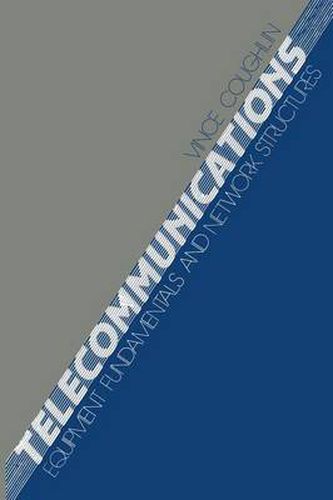Readings Newsletter
Become a Readings Member to make your shopping experience even easier.
Sign in or sign up for free!
You’re not far away from qualifying for FREE standard shipping within Australia
You’ve qualified for FREE standard shipping within Australia
The cart is loading…






This title is printed to order. This book may have been self-published. If so, we cannot guarantee the quality of the content. In the main most books will have gone through the editing process however some may not. We therefore suggest that you be aware of this before ordering this book. If in doubt check either the author or publisher’s details as we are unable to accept any returns unless they are faulty. Please contact us if you have any questions.
Modern technology began in the 1950’s and 1960’s, with the devel opment of transistor technology. At first it was useful in improving the performance of voice communications. But then it made possible extraordinary computer capability in manageable size-and at man ageable cost. First came large mainframe computers for only the largest companies; and later the microcomputer as we know it today. The increasing use of computers, in the 1960’s with their ability to manipulate and store vast quantities of information, stimulated the need for computers to communicate with one another and so tele phone circuits had to be segregated and conditioned specifically for computer traffic, using the modem. Computers ushered in a new era of business communications in which data could be developed, ma nipulated, stored or transmitted with remarkable ease. The recent pace of technological advancement has been breath taking and, today, the distinction between communications and computers is no longer even necessary. Computers, at the very core of communications networks, route and control communications on major common carriers. The decade of the 1980’s is bearing the fruits of the marriage of computers and communications. For the first time networks are en abling organizations to utilize the combined processing power of computers and communications equipment.
$9.00 standard shipping within Australia
FREE standard shipping within Australia for orders over $100.00
Express & International shipping calculated at checkout
This title is printed to order. This book may have been self-published. If so, we cannot guarantee the quality of the content. In the main most books will have gone through the editing process however some may not. We therefore suggest that you be aware of this before ordering this book. If in doubt check either the author or publisher’s details as we are unable to accept any returns unless they are faulty. Please contact us if you have any questions.
Modern technology began in the 1950’s and 1960’s, with the devel opment of transistor technology. At first it was useful in improving the performance of voice communications. But then it made possible extraordinary computer capability in manageable size-and at man ageable cost. First came large mainframe computers for only the largest companies; and later the microcomputer as we know it today. The increasing use of computers, in the 1960’s with their ability to manipulate and store vast quantities of information, stimulated the need for computers to communicate with one another and so tele phone circuits had to be segregated and conditioned specifically for computer traffic, using the modem. Computers ushered in a new era of business communications in which data could be developed, ma nipulated, stored or transmitted with remarkable ease. The recent pace of technological advancement has been breath taking and, today, the distinction between communications and computers is no longer even necessary. Computers, at the very core of communications networks, route and control communications on major common carriers. The decade of the 1980’s is bearing the fruits of the marriage of computers and communications. For the first time networks are en abling organizations to utilize the combined processing power of computers and communications equipment.